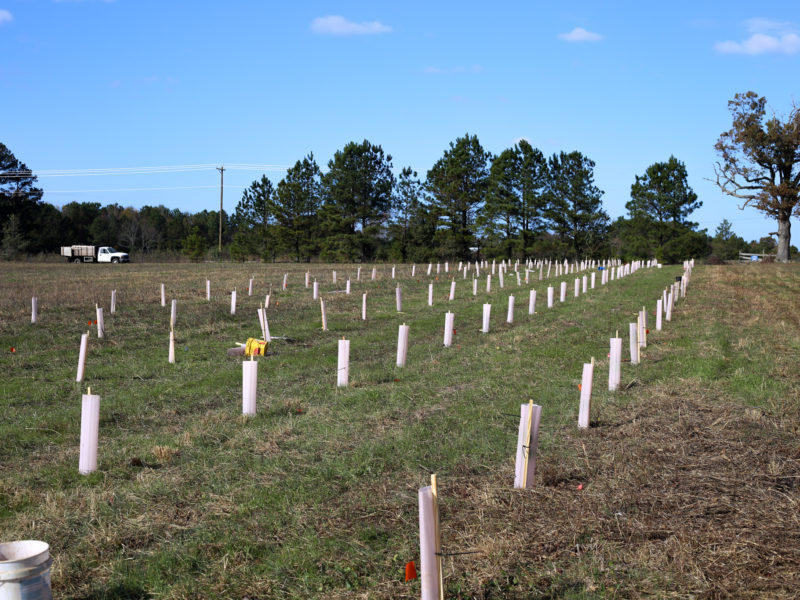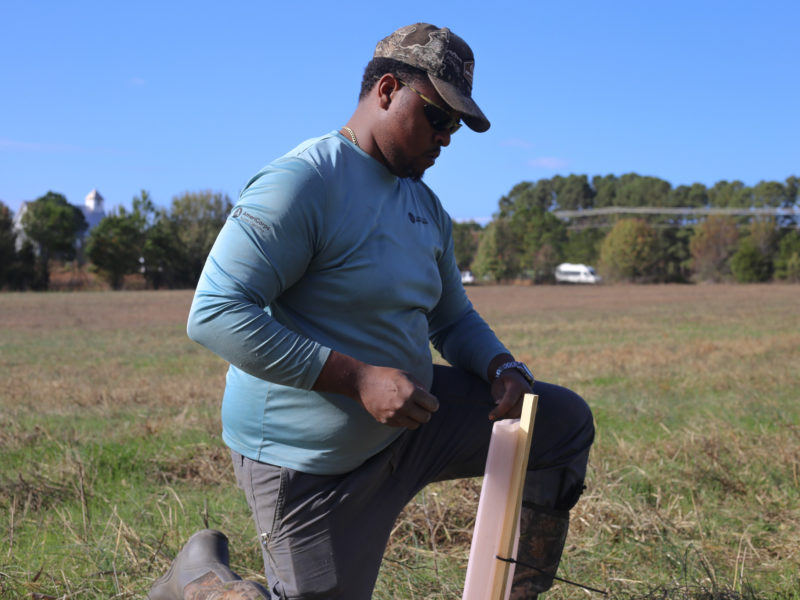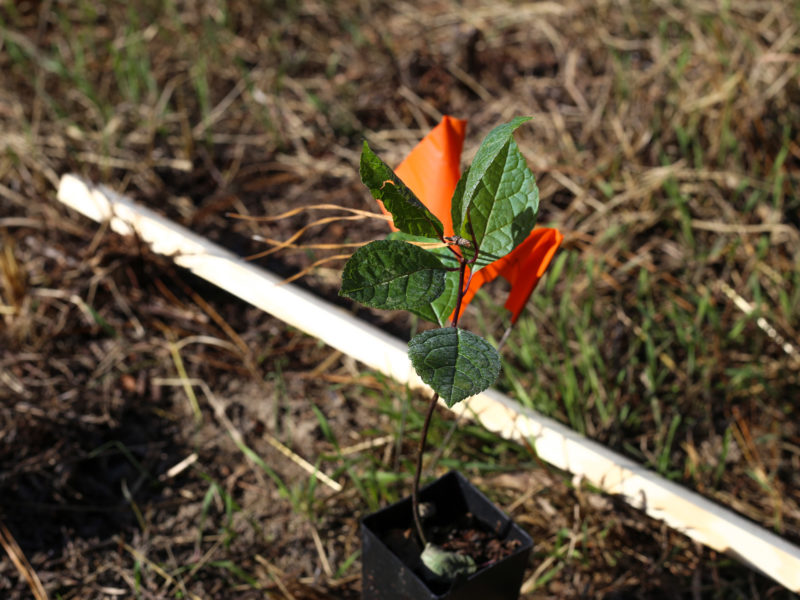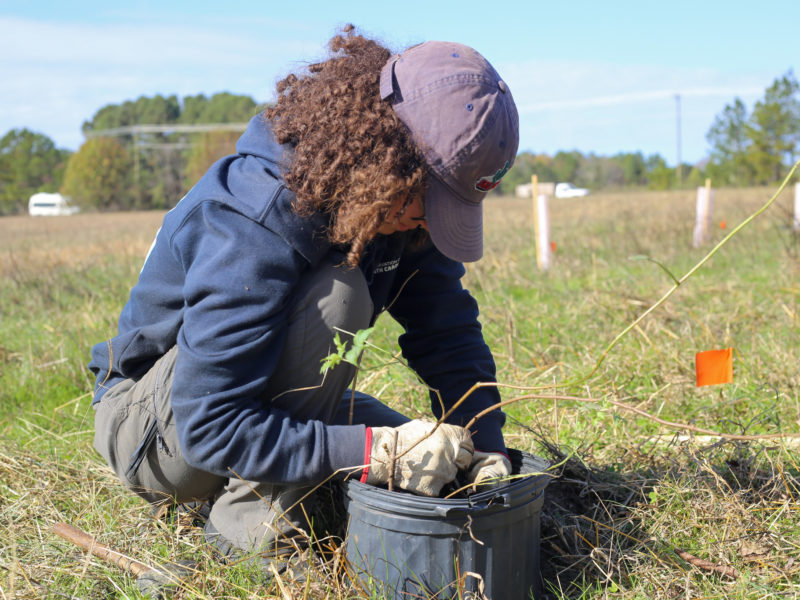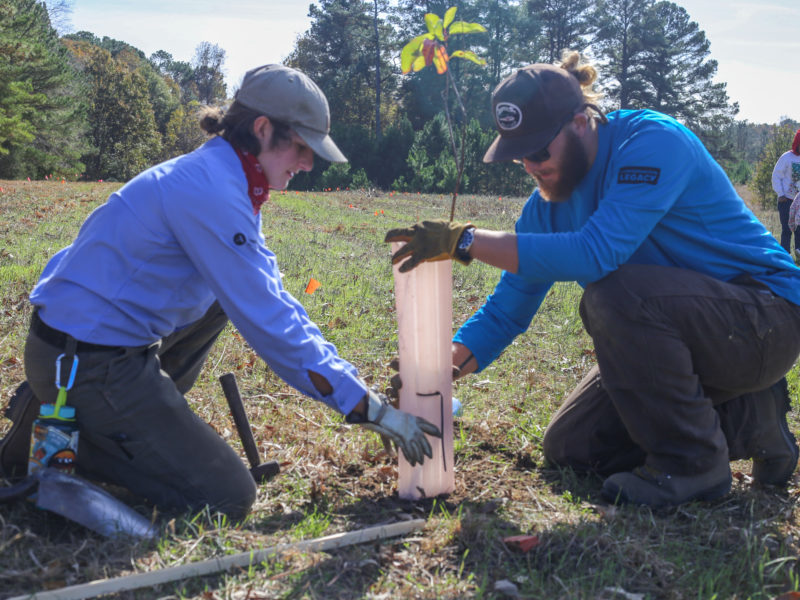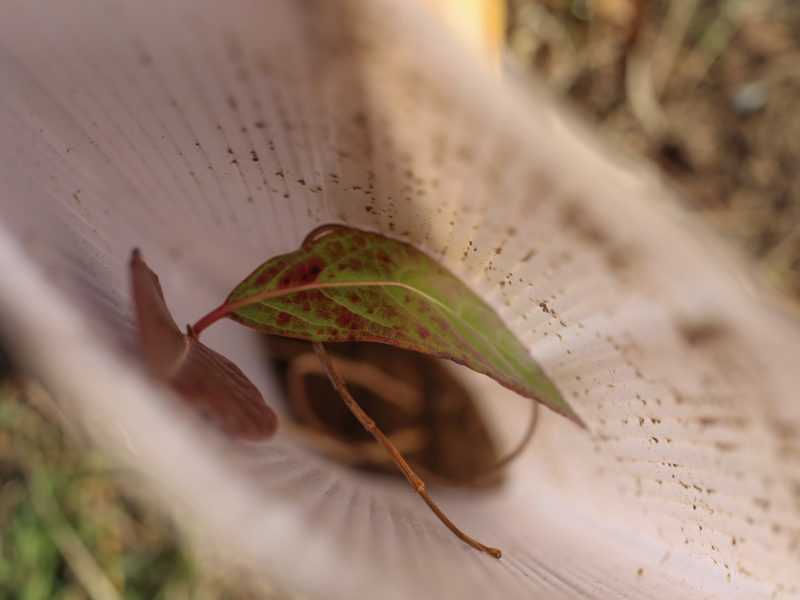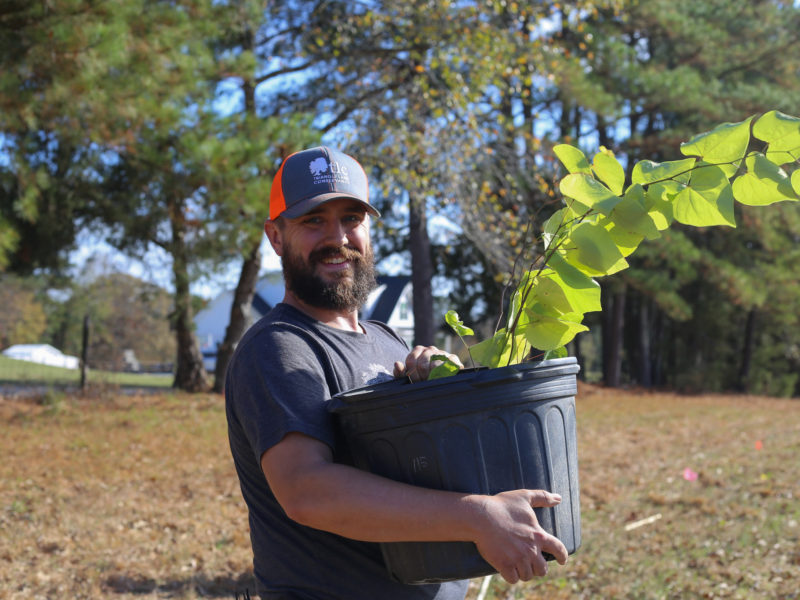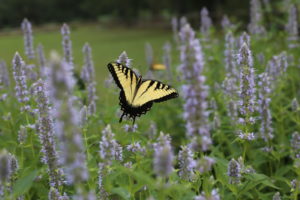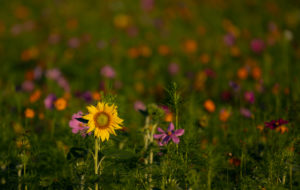This fall, volunteers and members of the Conservation Corps of North Carolina helped TLC with the first step in establishing a multi-dimensional pollinator habitat project at the Williamson Preserve. Together with TLC staff, the Corps members planted 400 hardwood seedlings over an acreage of open field. Once established, the woody plants, which include white false indigo, redbud, and elderberry, will serve as host plants for a variety of native pollinators.
All native species, the trees and shrubs will provide food resources and serve as host plants for a diversity of Lepidoptera (the order of insects that includes butterflies and moths) such as tiger and zebra swallowtails, elfins, and viceroys. The woody species will also provide over-wintering habitat for native bees, seed, and nesting spaces for songbirds, small mammals, reptiles, and amphibians.
Following two years of site preparations, planting the seedlings is an exciting step in the work of converting a fallow pasture at Williamson into a high diversity pollinator habitat with both woody and herbaceous species, which is possible thanks to a grant TLC received from the Environmental Quality Incentives Program. Through this project, pollinators and other wildlife will gain important resources for food, overwintering, and reproduction.
Pollinators are vital to creating and maintaining healthy ecosystems and provide many natural services that everyone from plants to people benefit from. According to the USDA, 35 percent of the world’s crops and 75 percent of all flowering plants need pollinators to reproduce. These diligent pollinators are severely threatened by disappearing habitats today. Without supporting species like bees, butterflies, and hummingbirds, the food we eat, the air we breathe, and the lands we love don’t exist.
Future plans for this project include establishing a 5-acre wildflower meadow onsite. The meadow would include a high diversity of native wildflowers and grasses to further increase the habitat value of the area.
We are grateful for the assistance of the many community members and organizations who have helped us with this project and so many others. Our ability to conserve land and improve wildlife habitat in the Triangle is all thanks to you!

